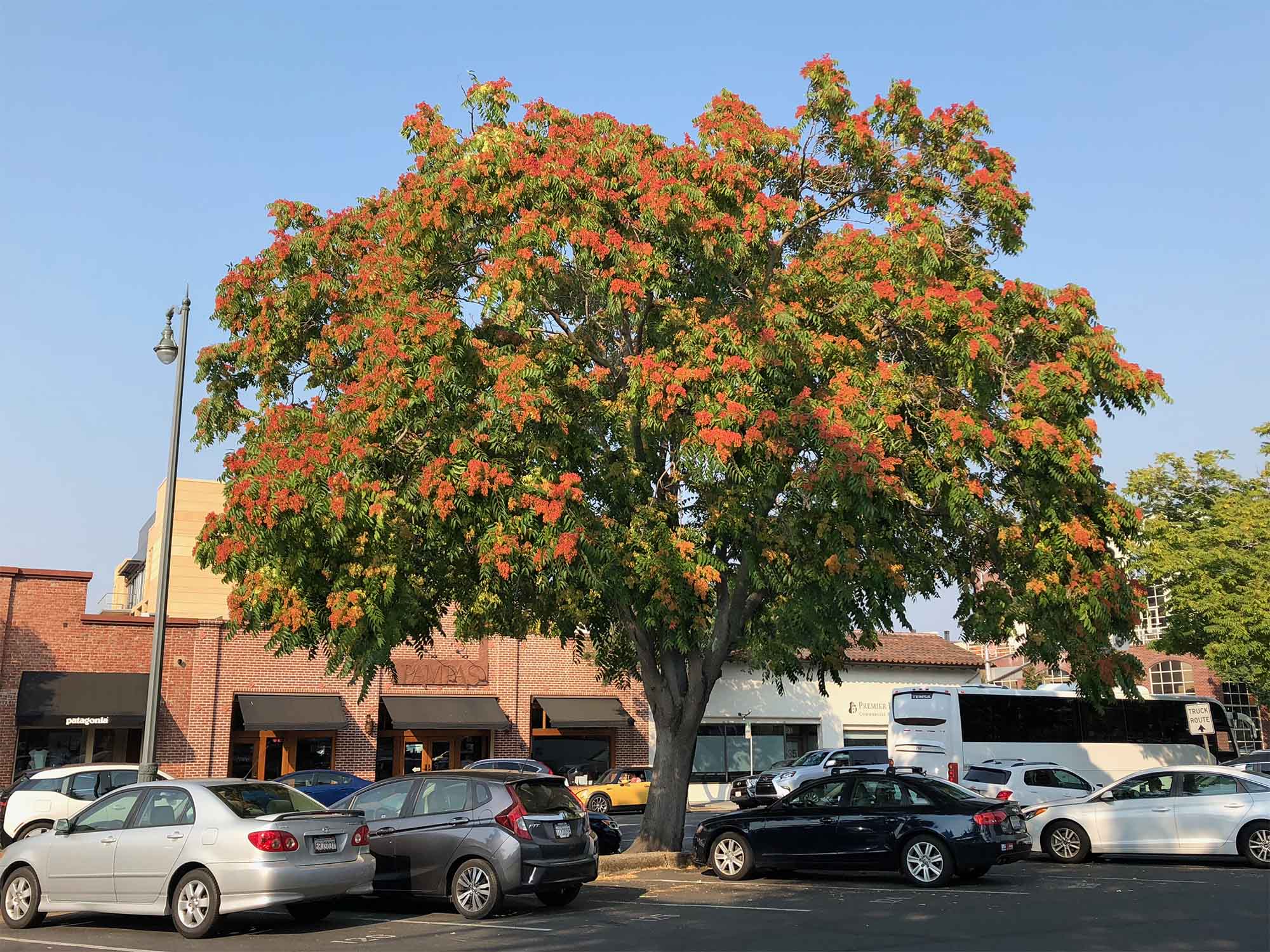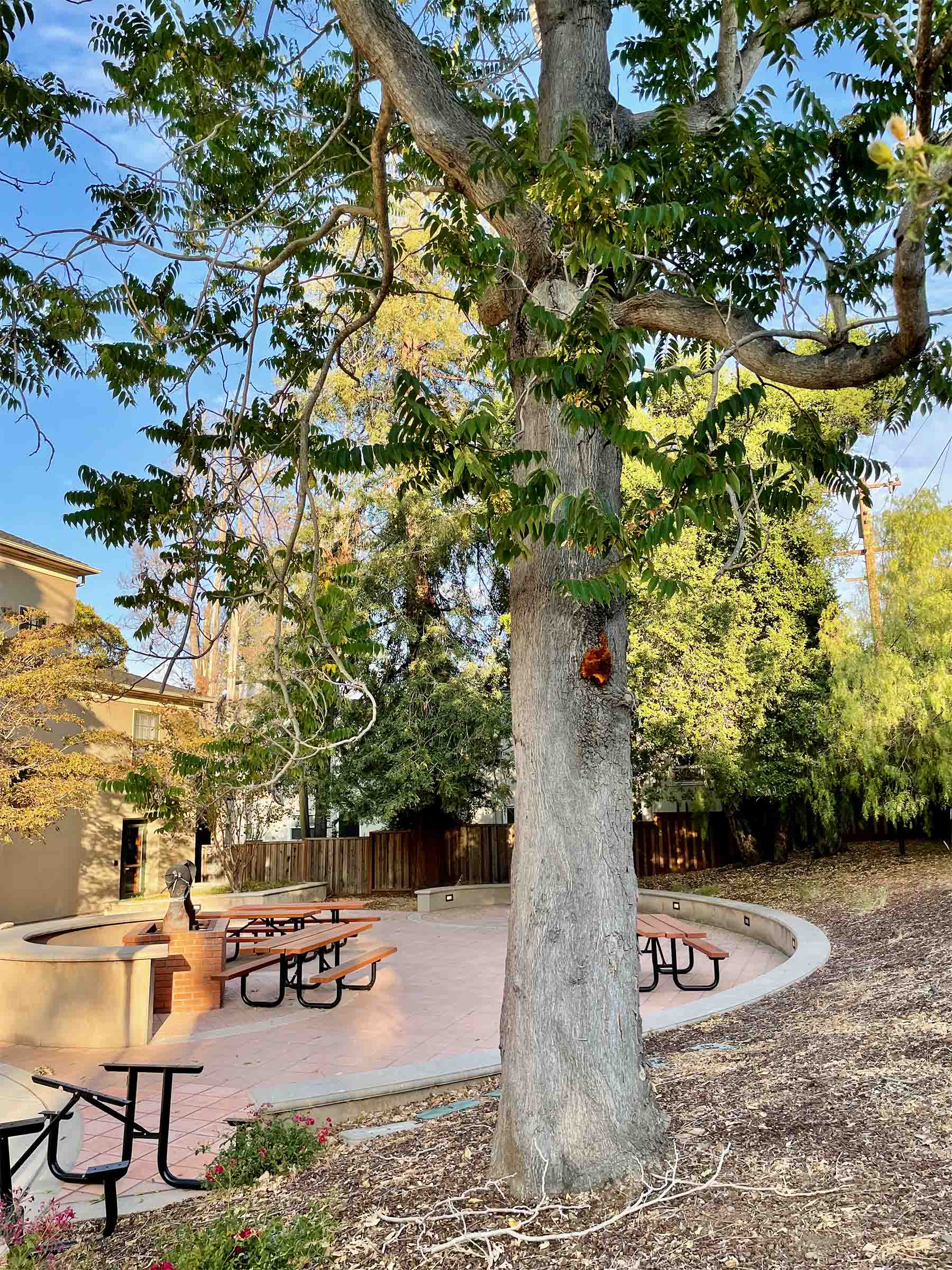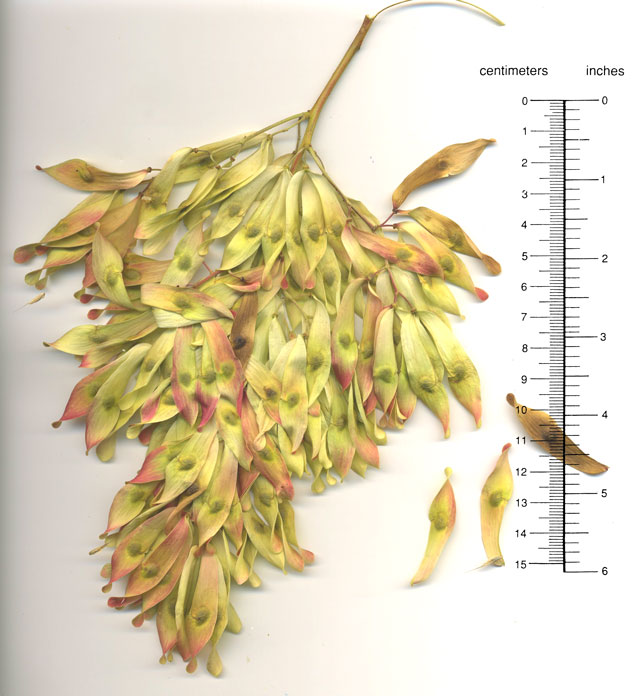Ailanthus altissima
 tree of heaven
tree of heaven

A nice shady tree, tree of heaven has a flair for escaping from cultivation and is doing well along Junipero Serra Boulevard at the Golf Course. Bunches of red samaras color the trees late in summer. The trees also grow wild along hot roadsides in the foothills of the Sierra Nevada and are famous for being able to grow out of concrete in Brooklyn. Such indomitable suckering may of course not be welcome. This botanical marvel is now the subject of breeding experiments to develop tougher wood and fewer flowers to fit it for street tree planting in situations where few choices are open. Some cities with extreme climates and dense automobile pollution are heavily dependent on just a few species, e.g. the London plane and honey locust in New York, with the risk that one disease could wipe out nearly half the trees planted over several decades. “It will grow where all else fails, and it’s better to have an Ailanthus than nothing” (Dr. Howard S. Irwin, Executive Director of the New York Botanical Garden). As of 1972, it was illegal to plant the tree of heaven along New York city streets.
The tree of heaven is not planted by design at Stanford but volunteers freely. The leaves have a distinctive odor and trees bearing staminate flowers have a smell that is objectionable to some. For this reason, female trees are preferred for planting in those areas where the tree of heaven is cultivated.
Large female specimens grow behind Phi Kappa Psi (592 Mayfield Avenue) and Haus Mitteleuropa (620) nearby. A giant at the southeast corner of the Kingscote Gardens building was lost to re-landscaping in 2015. In Palo Alto, see tree of heaven along the railway track, including full-canopied female specimens – stunning when adorned with samaras in late summer – in the Alma Street parking lot across from 101 Forest Avenue.
Name derivation: Ailanthus – Latinized version of the native Moluccan word ailanto (sky tree) for a species of this genus; altissima – tallest.
About this Entry: The main text of this entry is from the book Trees of Stanford and Environs, by Ronald Bracewell, published 2005. Removed locations: opposite 267 Santa Teresa Lane, 1018 Campus Drive, north of Applied Physics/Ginzton Lab; added Row and Palo Alto locations; all locations up to date (Dec 2022, SP).





